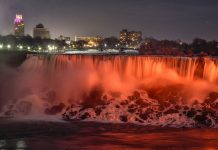The beautiful Earth is the result of billions of years of destruction, creation, and extinction. What started out as a torrid, lifeless, rock is now bustling with over 7 billion people – a luminous blue marble, floating in the eternally dark and void – so majestic!
The wonderful Earth with mighty, roaring oceans covering most of its surface is further adorned with soaring mountains, hill and impressive vegetation.
As the inhabitants of this planet, we decided to design the planet as our wish – we decided to tame it. We had built civilizations across the Earth’s arable land that continue to amaze and inspire to date. Later, we built roads, mystical domes, and grandiose skyscrapers soaring high, determined to pierce the impeccable sky. All of these announce our supremacy – our glory.
We have achieved so much and are determined to advance that we can’t think of undoing everything and rebuilding. We can’t afford to lag behind with all our advances. However, there are forces that continue to threaten our advances – forces that even wrest countless lives with their devastating might.
It’s obvious we are unable to tame the forces. They are getting deadly every moment. What is leading all these forces is the change in climate.
Yes, it is particularly in periods of great change, climate destroys everything in its path, claims lives and turns countless others into refugees in its wake.
To achieve such multitudes of devastation, all it has to do is unfetter the Sun’s scorching rays and trap its heat.
Unfortunately, we, humans, contribute to the deterioration of climate.
It is projected that global climate will continue to change over the 21st century and beyond. How monumental the change will be beyond this century depends on the amount of heat-trapping gases released globally.
This article summarizes how devastating climate change is, what can be projected for the future and how you can be part of the solution.
Climate Change: Impacts
Climate change is the crucial issue of our time. It is impacting ecosystems, people, and communities all across the globe. These impacts go well beyond just an increase in temperature. Although the change in climate is global, its impacts will not be the same across the world.
Some nations may benefit from the change, while others will experience its adverse effects. Climate change is directly responsible for heat stress, cold waves, heavy showers, flooding events, and droughts. Below are the key points discussed in terms of climate change impacts:
- Due to flooding events, heat stress and drought, many parts of the world will experience reductions in crop productions and livestock productivity.
- Climate change is leading the decline in wheat yields for some African countries.
- With increased global temperatures, climate change will cause changes in precipitation, sea level rise, and more intense events.
- Increase in sea levels will impact water quality and fish species in the Lower Mekong delta in Asia. More than 40 million people rely on fishes caught in the area.
- Climate change will disrupt food availability in tropical regions, making access to food and utilization even more difficult. That’s because climate change will cause the greatest decrease in crop yields in tropical regions.
- Changes in precipitation, sea level rise and many other frequent or extreme events will eventually decrease water quality and increase bacteria in water sources.
Impacts on Human Health
- As climate change will cause a decline in crop yields, people will be subject to malnutrition. Impacts on other food systems will accelerate food-borne diseases.
- Drought-affected regions will experience the epidemic of meningitis. Sub-Saharan regions will be particularly at risk should such outbreak happen.
- Heat stress and wildfires are leading to respiratory and cardiovascular diseases.
Climate Change: Predictions
Choices made now will dictate the future status of climate. Below are the key points discussed:
- Over the next two decades, the Earth’s global average temperature will increase by 0.2˚ C.
- Areas in the vicinity of the poles are projected to receive more precipitation, while the dry subtropics will receive less rain.
- The Mediterranean is currently dry and will become even drier in the future.
- As climate changes, snow and ice will melt. Ice sheets, summer glacier melting are projected to be higher than the amount of winter precipitation.
- As a consequence of global warming; typhoons, hurricanes, and other tropical cyclones will change.
- The world is already experiencing an uptick in the numbers of storms.
- Major ice sheets in Greenland and Antarctica will collapse, resulting in sea level rise and immersion of low-lying areas.
Climate change: Solutions
What can one person or one community do to slow and reverse climate change? Take a look at the key points to play your part in the prevention:
- Limit the use fossil fuels, and promote biodiesel, plant-based plastics, wind power, solar panel for a change. Although there are no perfect alternatives to fossil fuels, every bit counts. Therefore, prioritize clean, safe renewable energy sources.
- Forgo fluorine gases completely. They pose a serious threat to the climate.
- Nuclear power is promoted as the best alternative to fossil fuels. Actually, it’s a false solution. Although nuclear power doesn’t emit greenhouse gasses, it produces radioactive waste.
- Avoid transportation that requires fossil fuels as much as possible. Switch cycling, walking or some other mode of transportation that requires human energy.
Bottom Line
Climate change is an important issue that needs immediate attention from all of us. We all have a bit of part to play to reverse the process. However, it doesn’t have to feel like the end of the world. As a consumer, you can lead the change by reducing your carbon footprint. As long as we believe we share the same future, change for good is inevitable.















